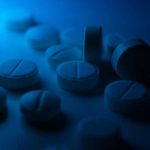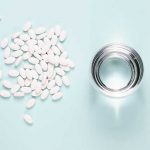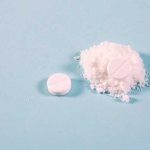Oxycodone is an opioid prescription drug used for moderate to severe pain. It’s sometimes combined with other analgesics (pain relievers), such as aspirin, acetaminophen, or ibuprofen. A few brand names include OxyContin, Percocet, Percodan, and Combunox.
Most people who abuse oxycodone take it in pill form, but some choose injection as a method of administration because it takes the drug to their brain more quickly.
Oxycodone Side Effects
If you’re abusing oxycodone by injection, chances are you’re taking frequent high doses. Taking more of the drug raises your risk of side effects that can occur even with the prescribed use of oxycodone.
Oxycodone side effects that are more likely with substance abuse include:
- stomach pain
- constipation
- dry mouth
- flushing
- headaches
- mood changes
Oxycodone abuse can also lead to severe side effects, such as:
- chest pain
- nausea and vomiting
- loss of appetite
- dizziness
- drowsiness
- weakness
- swelling of extremities
- rashes, hives, or itchy skin
- confusion
- hallucinations
- racing heart rate
- muscle stiffness
Dangers Of Injecting Oxycodone
There are two types of oxycodone: immediate-release and extended-release. Both are formulated to enter your system at a safe pace. The extended-release (ER) version should be gradually distributed throughout the day.
When you inject oxycodone, it all goes straight into your bloodstream, making it harder for your body to process.
Oxycodone Overdose
Drug injection raises the risk of overdose, especially with opioids. Opioid drugs were involved in more than 70 percent of overdose deaths in 2019.
Naloxone (Narcan) is a drug that reverses opioid overdose and is widely available in the United States. But even if naloxone saves your life, it may not prevent brain damage caused by lack of oxygen during an opioid overdose.
Skin & Heart Infections
Injection drug use can cause infection throughout the body, most commonly in the heart and skin. Bacteria on an unsterilized needle (even if you don’t share needles) can enter your bloodstream.
A bacterial infection of the heart lining, valves, or blood vessels is called infective endocarditis. Symptoms include fever, chills, racing heartbeat, fatigue, body aches, and swelling in the feet, legs, or abdomen.
Bacterial skin infections can cause abscesses (swollen, pus-filled tissue) at the injection site. They can also cause the tissue to die (necrosis).
Necrosis can lead to gangrene, a condition in which blood cannot flow to large areas of tissue. Gangrene is a severe infection that may require limb amputation to keep it from spreading.
Vein Damage
Injecting oxycodone is not good for your veins. Repeated injection into the same vein can cause scarring (track marks). The vein will eventually collapse. Injecting both legal and illicit drugs without supervision can cause blood clots and collapsed blood vessels as well.
Disease Transmission
Some people who inject oxycodone share needles. Bloodborne diseases like HIV and Hepatitis C are spread when an infected person’s blood is on a needle that enters an uninfected person’s bloodstream.
HIV (human immunodeficiency virus) destroys the immune system, while Hepatitis C can lead to severe liver damage.
HIV can also be spread through unsafe sexual behavior. People who struggle with drug abuse often make poor lifestyle choices or are at times unaware of what they’re doing.
Oxycodone Addiction & Dependence
Oxycodone is a Schedule II controlled substance because it has a high potential for addiction and abuse. Taking this prescription opioid by injection makes it even more addictive because it gets to your brain more quickly.
When someone is addicted to oxycodone, they spend a lot of time and money seeking, buying, and using the drug. Even if it’s harmful to their health, personal relationships, and other areas of their life, they’re unable to stop or cut back. Addiction is a serious and life-threatening disease.
When you use oxycodone for a prolonged period, you’re likely to become physically dependent on it as well. Your body adjusts to the drug and needs it to function. If you suddenly stop taking it, your body will go through an unpleasant withdrawal process before recovering.
More Intense Oxycodone Withdrawal
People who inject oxycodone tend to have worse withdrawal symptoms than people who ingest the pills. This could be because drug injection is often the choice of someone who abuses drugs heavily, and heavy drug use leads to more acute withdrawals.
The fact that oxycodone hits their system more intensely may also make the withdrawal process more difficult.
If you or a loved one are struggling with oxycodone injection, help is available. At Northeast Addictions Treatment Center, we offer free and confidential guidance toward a treatment program that best suits your needs. Contact us today to learn more.
Sources
Written by
Northeast Addition Editorial Team
©2024 Northeast Addition Center | All Rights Reserved
This page does not provide medical advice.




